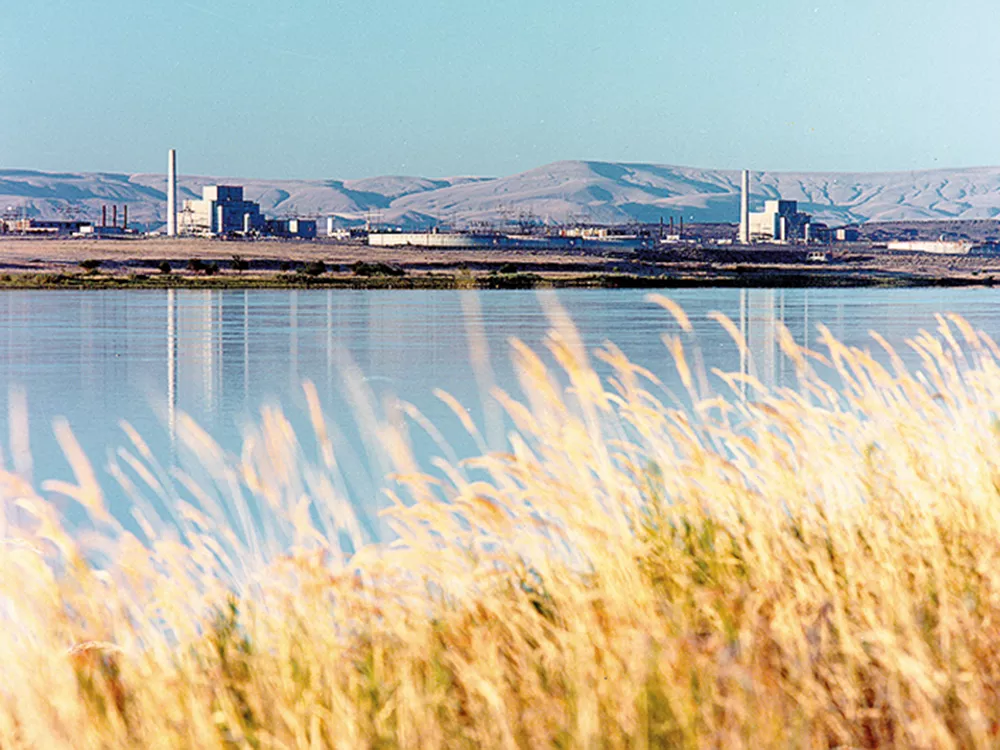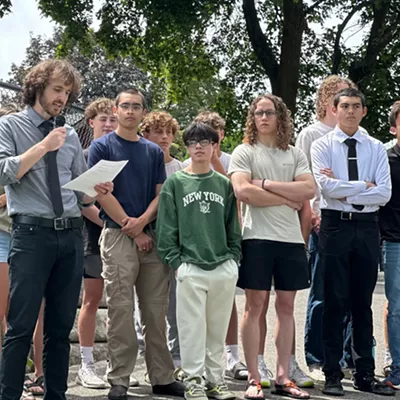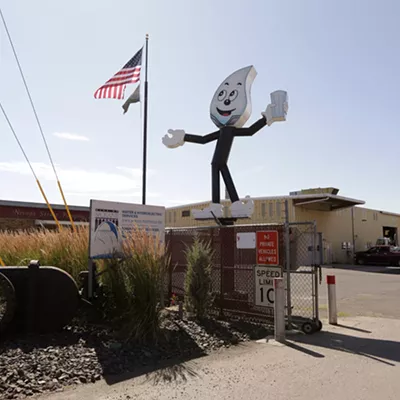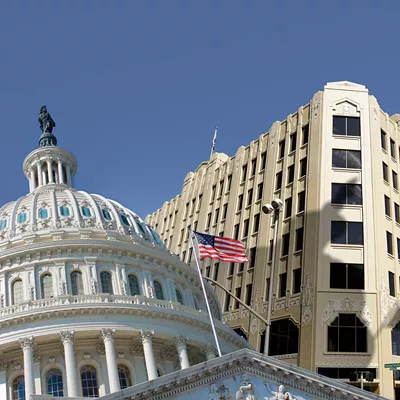Few things sound like worse news than the phrase “leaking radioactive waste.”
But on Feb. 22, Gov. Jay Inslee’s office used those words in a press release to describe Hanford, the world’s first full-scale plutonium production facility that later became the country’s most contaminated nuclear waste site. The Department of Energy confirmed that at least six underground tanks full of nuclear sludge were leaking at the southeastern Washington site — and even more may be failing. If the contamination were to make it to the aquifer or Columbia River, it could cause serious ecological damage.
The news spurred Oregon Senator Ron Wyden to call the leaks “unacceptable threats.” Both he and the environmental organization Columbia Riverkeeper have called for a governmental investigation into the cleanup efforts.
But many in the three nearby cities, Richland, Pasco and Kennewick, aren’t as worried about the nuclear waste as the more immediate bad news: Layoffs and furloughs poised to slow down the cleanup and wallop the region’s economy.
Hanford helped create the Tri-Cities. And Hanford helped create John Fox, the mayor of Richland. As a nuclear engineer, he started working at Hanford all the way back in 1951.
If it hadn’t been for Hanford, Fox suspects the Tri-Cities would have remained a sleepy agricultural community like Wenatchee. WSU probably wouldn’t have a branch campus in Richland. The Pacific Northwest National Laboratory never would have been built.
Even the wine industry, which at first glance has nothing to do with nuclear power, has relied on the money, jobs and investment Hanford generated.
“We might not have had the money to finance them,” Fox said. “A number of people that started wineries were chemists and chemical engineers.”
Hanford has seeped deep into the local culture. Businesses have names like Atomic Laundry, Atomic Foods, Atomic Health Center, and the Atomic Ale Brewpub & Eatery. Richland High School’s logo is a mushroom cloud, and “Proud of the Cloud” is a bumper sticker slogan.
Hanford has meant wide swings between booms and busts. For the past half-century, the Tri-Cities economy gradually has been moving away from the nuclear industry, branching out into industries like wine and agriculture. But Hanford has remained a key driver of economic prosperity and economic downturn.
The reactors at Hanford that fueled atom bombs were shut down in 1960s and ’70s, leaving a gaping hole in the regional economy. The ambitions of nuclear power catalyzed a flurry of economic activity for another decade, but that dream fizzled as well. Only a fraction of the planned nuclear power plants ever came online.
Toward end of the 1980s, however, Hanford’s contamination became a sort of economic advantage. The nuclear cleanup industry arose, bringing with it a steady stream of federal money.
The latest boom came courtesy of the financial meltdown. When the recession hit, much of the country’s economy skidded to a halt, but not in the Tri-Cities. Instead, the shovel-ready Hanford cleanup efforts received $2 billion in stimulus spending.
“The past two and a half years, this area has grown dramatically, while the rest of the nation had the big setback,” Fox says.
Gary Petersen, vice president of Hanford Programs for the Tri-City Development Council, says few areas were able to make the stimulus count like Hanford.
“It moved cleanup ahead a couple of years. The $2 billion brought about 2,000 new jobs,” Petersen says. “Almost all the physical landmass is almost clean.”
But when the stimulus ended two years later, nearly 3,000 jobs went with it. Local economic experts began to predict slower growth in the region. Now, thanks to budget cuts from the sequester, jobs are disappearing even faster.
Starting this week, almost 240 workers were laid off, and an additional 2,600 were warned of potential furloughs. Cleanup will begin to slow. Local subcontractors will start to see their contracts eliminated. And there will be secondary effects, rippling outward.
“People are tightening their belts,” Fox says. “The retail shops and restaurants will feel an impact from that.”
By contrast, the leaking tanks represent a long-range engineering problem, not an immediate threat. Years ago, Tim Connor, an investigative journalist with the Center for Justice, was instrumental in the movement to shut down plutonium production and start cleaning up Hanford. He says the leaks are “really, really minor in terms of their environmental effect,” compared to the larger contamination.
The leaking nuclear waste has the consistency of peanut butter or wet cement, not water. It’s 300 feet above the aquifer, Connor says, and several miles away from the Columbia River.
“I want people to get it right technically,” Connor says. “We don’t have to exaggerate the threat to Hanford. The truth is bad.” But even from a physical health perspective, the sequester has had more impact. Conversations with local contractors have led Connor to believe that furlough fears have worn down some employees.
“The garden-variety accident rate has gone up because of the stress,” Connor says.
Fixing those leaks represents another economic opportunity. The question is, for whom? More than a decade ago, construction began on a vitrification plant that could encase radioactive waste in solid glass logs. Bechtel Construction spokesman Todd Nelson says his company already has spent $995 million in the Tri-Cities and $61 million in Spokane.
But the vitrification plant is only two-thirds complete and has been plagued by numerous delays and technical setbacks. Nelson says the plant may not even be completed by 2019. Gov. Inslee has suggested shipping some of the waste to New Mexico and constructing new double-walled tanks instead, proposals that could stimulate entirely different industries.
“It’s going to be another shadow in the desert,” Mark Keffeler, business manager for the local chapter of the boilermakers union, says about the vitrification plant. “I doubt it will ever get done.” He says Washington state needs to fast-track the construction of double-walled tanks, and not just because his industry would benefit.
“It is the only viable known solution to store that waste at the present time,” Keffeler says.
But any solution, however practical, requires money. “We can scream and yell and pound the table” but it won’t do much good, Petersen says. “I deal with Congress all the time. I will just say right at the moment there is no extra money.”





















